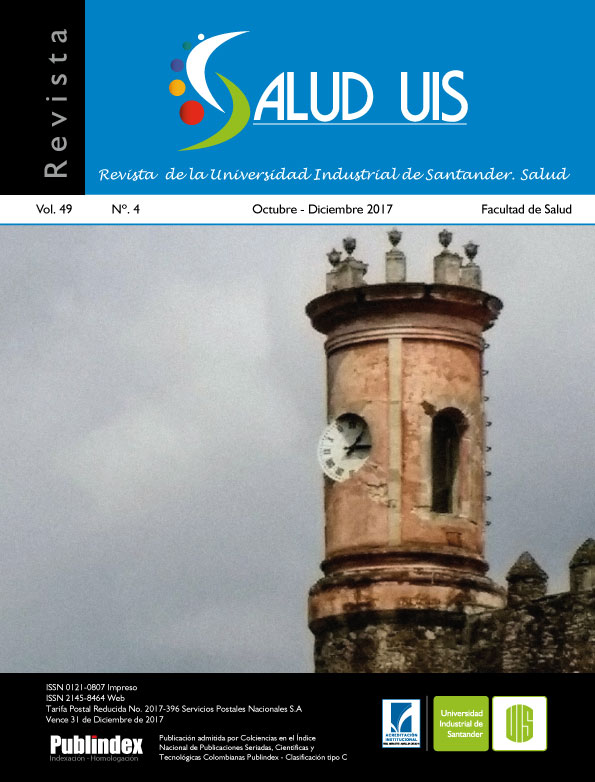Abstract
Introduction: EPO is a glycosylated alpha globulin produced in more than 90% by kidneys through adult life, being a key hormone that regulated the erythrocytic mass; however, it exists some levels modification of this hormone related to smoking, anemia, EPOC and migration to from low to higher altitudes, which causes a hypoxic process. Depending on individuals it produces or not the so called acute mountain sickness. Objective: To describe erythropoietin level modifications, reticulocytes count and its influence in adaptive process to the altitude. Methodology: It is a transversal descriptive study which included 11 participants from low altitudes places who EPO seric concentration and reticulocytes count was determined during a 28 days period. Results: Eight participants presented a progressive increase in EPO seric levels, one participant showed a constant level and two more showed atypical results according with literature reported. Conclusion: The EPO is a key factor which determines the erythropoiesis beginning, its objective is to improve the oxygen provision in altitude adaptive process and increases its concentration in blood due to hypoxic stimulus; hypoxia is a determinant factor in the beginning and development of acute mountain sickness. The reticulocytes counting depends also from proliferative and antiapoptotic EPO stimulus by seric concentrations of B12 vitamin, iron and folic acid
References
2. Aguilera JC. Eritropoyetina humana recombinante. Departamento de investigacion y Desarrollo. laboratorios CILAG, S.A. Vol. 7, Biseden. 1988; 5-10.
3. Jelkman W. The disparate roles of cobalt in erytropoiesis and doping relevance. O J Hematol. 2012; 3: 3-6. DOI: 10.13055/ojhmt_3_1_6.121211.
4. Wagner P. El factor HIF-1 inducido por la hipoxia y la sensibilidad al oxígeno. Rol del hierro intracelular. Acta Méd. Peruana. 2011; 28(3).
5. Cabrera García L, Ruíz Antorán B, Sancho López A. Eritropoyetina: revision de indicaciones. Inf Ter Sist Nac salud. 2009; 33: 3-9.
6. Ira Stuart. Fisiología Humana. 12a edicion. ISBN: 978-607-15-0607-8 Igarss: 1-810. 2014.
7. Calderon Velez JC. El Factor Inducible Por la hipoxia y la actividad fisica. Iatreia. 2007; 20(2): 160-166.
8. Vargas Pinilla OC. Exercise and training at altitudes: physiological effects and protocols. Rev Cienc Salud. 2014; 115-130.
9. Wagner Grau P. El factor HIF-1 inducido por la hipoxia y la sensibilidad al oxígeno. Rol del hierro intracelular. Act Méd Peruana. 2011; 28(3): 8-163.
10. Huang HH, Han CL, Yan HC, Kao WY, Tsai CD, Yen DHT, et al. Oxidative stress and erythropoietin response in altitude exposure. Clin Investig Med. 2008; 31(6): E380-385.
11. García MB, Rubio SC. Interacción fisiológica de la hormona eritropoyetina, relacionada con el ejercicio físico en altitud moderada y alta. Rev Investig Salud Univ Boyacá. 2016; 1(1): 73-96.
12. Cardenas DG. Fisiología de las grandes alturas. Fisiol Ren Altura. 2011; 7-14.
13. Chapman RF, Stray-Gundersen J, Levine BD. Individual variation in response to altitude training. J Appl Physiol. 1998; 85(4): 1448-1456.
14. Friedmann-Bette B. Classical altitude training. Scand J Med Sci Sports. 2008; 18(1): 11-20. DOI: 10.1111/j.1600-0838.2008.00828.
15. Tobergte DR, Curtis S. Fisiologia medica. J Chem Inf Modeling. 2013; 53: 1689-1699.
16. Riveros A, Sánchez Godoy JA, Buitrago N, Cristancho E. Evidencia del comportamiento circadiano de la EPO con dependencia del sexo e independencia de parámetros fisiológicos en jóvenes entrenados en la altura moderada. Rev Med. 2014; 22(2): 37-48.
17. Jelkmann W. Regulation of erythropoietin production. J Physiol. 2011; 589(6): 1251-1258. DOI: 10.1113/jphysiol.2010.195057.

This work is licensed under a Creative Commons Attribution 4.0 International License.
